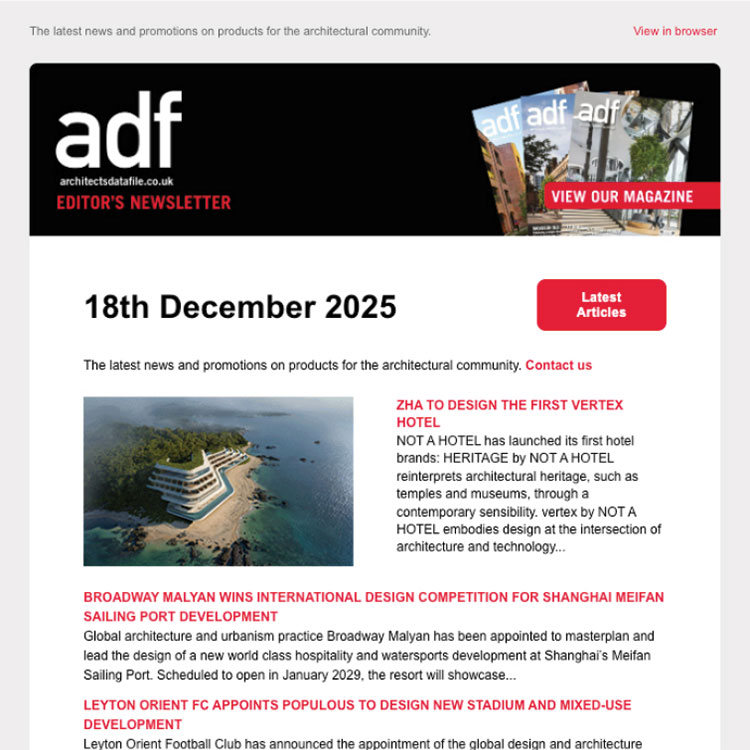Since its implementation in 2022, the Building Safety Act has been a cause of confusion and uncertainty for architects, contractors, management companies and many other key players in the industry.
A direct response to the Grenfell Tower tragedy and the subsequent Hackitt Report, which highlighted glaring oversight in building safety regulations, the Act aims to enhance safety and accountability in the industry. Despite its intended purpose, however, the Act has left many unsure of how the new regulations impact them and what their new legal responsibilities are in practice.
With architecture firms under increased scrutiny to ensure that building designs comply with new legal requirements, it’s crucial that architects understand the full scope of their obligations.
Peter Doyle, head of health and safety at Citation, outlines what the Building Safety Act 2022 is, how it’s impacting the architecture sector and what practices can do to ensure they’re compliant.
What is the Building Safety Act 2022?
Described by the ex-Housing Secretary Robert Jenrick as “the biggest change to building safety regulation in a generation”, the Building Safety Act 2022 aims to reduce safety risks related to fire spread and structural failure through stricter planning processes, additional regulations for competency, and new duty holder roles during the design and construction of higher-risk buildings (HRBs). This includes hospitals and care homes that contain at least two residential units and meet the 18 metre or seven storey height thresholds.
While the principles of the Building Safety Act apply to buildings at all levels and heights, HRBs will be subject to a tougher, more formal regime in proportion to the level of risk.
The Act was closely followed by the Building Regulations etc. (Amendment) (England) Regulations 2023 which provided further clarity on how the government intends to implement these new regulations. Crucially, it confirmed that under the Building Safety Act 2022, any project requiring a new Building Regulations application, not just HRBs, will now require two ‘principal duty holders’ to be appointed: the Principal Designer and the Principal Contractor.
How it impacts the architecture sector
Arguably one of the biggest impacts for architects is the increased responsibilities and technical challenges that come with the new Principal Designer role.
Before a project is even commissioned, you are expected to ensure that the design team you’re managing have the skills, knowledge and experience needed to competently work on it. This might mean that some team members will need additional training to be upskilled and ready to begin work.
Once work begins on a project, you will be responsible for planning, managing and monitoring design work to ensure that it’s fully compliant with the new regulations, while maintaining a ‘golden thread’ of live data on design decisions in relation to fire and structural safety.
While any designer who works on a project still has a responsibility to ensure their work is compliant with the new regulations, the Principal Designer has an overall duty to guarantee the work complies with the Building Safety Act.
You’ll also need to ensure that an appropriate frequency of inspections of HRB design work are carried out throughout construction to check the structural integrity and fire safety of the building.
But it’s not just Principal Designers that have additional duties, any designer working on a project has new responsibilities they must comply with. Before you can even begin any design work, you must ensure that the client is fully aware of their own duties on a project. You must also contribute to maintaining the ‘golden thread’ of data by updating the client, contractors and other designers with information in relation to the design, maintenance and construction of the building. You are also expected to report any concerns you have with the compatibility to the master plan of not just your own work, but other designers work on a project; so, for instance if a design choice is made by another member of the team working on the project, it must be checked to ensure it does not negatively affect the buildings performance and raise concerns where it is found to do so. You also have a duty, if requested to do so, to advise the client or Principal Designer if any work they are planning or modifying is classed as HRB work.
Gateway system
HRBs are now subject to a new three gateway system during planning and design, construction and occupation, monitored by the newly established Building Safety Regulator (BSR).
Compliance with the first two gateways is crucial for architects to ensure that the project can begin construction. The purpose of gateway one is to ensure that fire safety is a top priority and evidenced within the design proposals for HRBs before planning permission can be granted.
Gateway two is a hold point where construction can’t begin until the BSR agrees that the design of the HRB aligns with Building Regulations. A thorough inspection of regulations comes into effect at each stage of the design and construction process. 91% of construction professionals surveyed by Cornerstone Projects LTD stated that they have worked on a project in recent years that has experienced delays. These delays can be time consuming and costly, so it’s beneficial for designers to ensure their work is compliant with regulations.
A final hold point is introduced at gateway three after completion of construction and before occupation of the building can occur. This point is where the golden thread of data, that Principal Designers have been responsible for documenting, is essential as it will be submitted to the BSR, with the Principal Designer and Principal Contractor confirming that the building complies with applicable Building Regulations. In order for a completion certificate to be approved, the data must include sufficient evidence that the HRB reflects the approved plans and the building regulations requirements have been met.
While non-HRBs aren’t subject to formal gateway systems, Principal Designers and Principal Contractors still have a responsibility to ensure they remain compliant with Building Regulations and demonstrate and maintain competence. However, the standards for competency are less onerous for these projects.
Additionally, in order to receive a certificate of completion, clients are still required to declare non-HRB projects compliant on completion.
Getting up to standard
Project delays can be time consuming and costly, where non-compliance can result in unlimited fines and, in the worst cases, a conviction. It’s crucial that Principal Designers and any architects working on a project to understand why these regulations have come into effect and how they can be beneficial to their work.
The most important thing is to make sure you’re fully comfortable with the new legislation and understand how it impacts your practice.
Practices will need to review the Act and either implement the appropriate training or ensure they don’t bid for projects outside of the required competencies.
The new duties and responsibilities of the Principal Designer can mean additional deliverables on a project, so it’s important to make sure you give yourself enough time to plan and prepare before a project begins to avoid delays and unnecessary headaches during the build.
Peter Doyle, head of health and safety services at Citation
For more information, visit: https://www.citation.co.uk/


